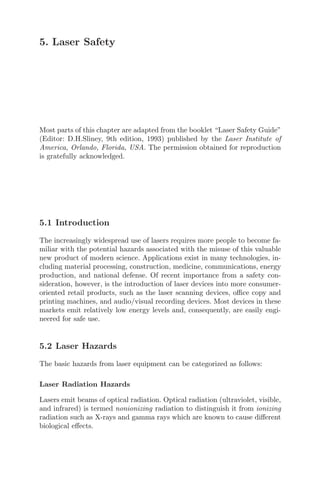This document summarizes laser safety hazards and standards. It describes the potential eye, skin, electrical, and other hazards from laser radiation and systems. It also outlines the ANSI laser hazard classification system which categorizes lasers into four classes based on their potential to cause injury, with Class 1 being safest and Class 4 being most hazardous. Control measures are specified for each class to ensure safe use.














